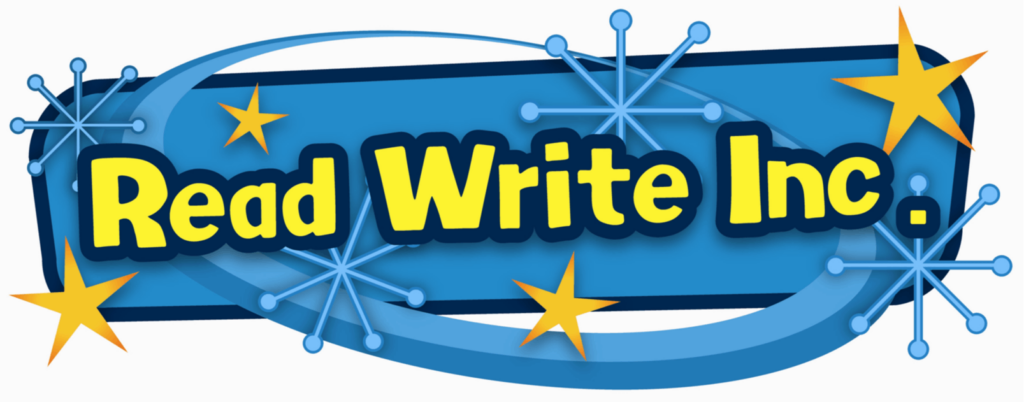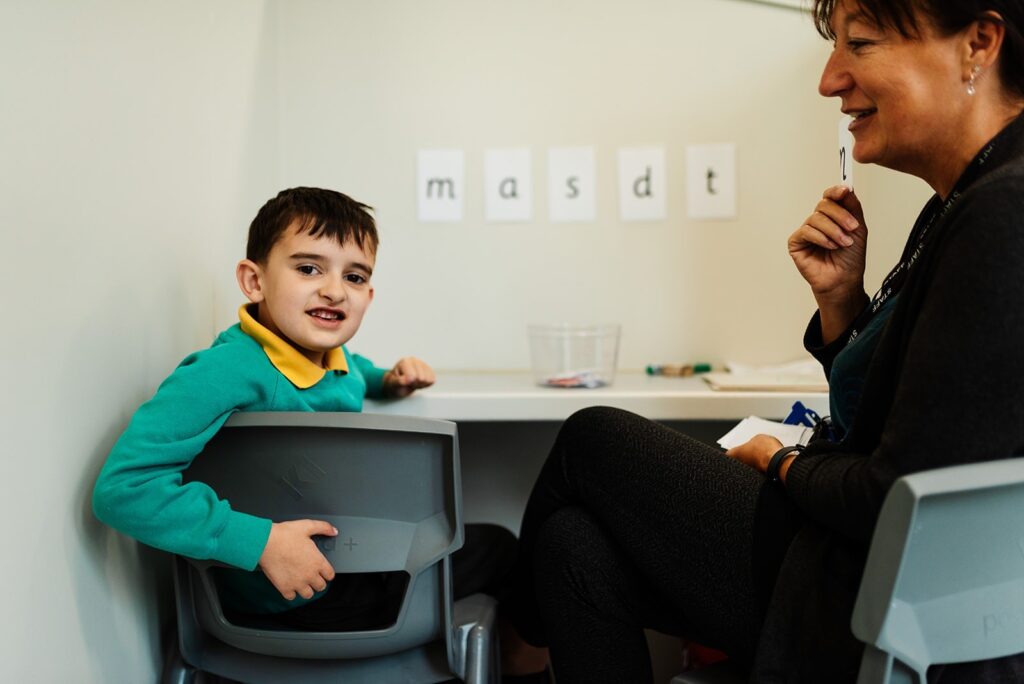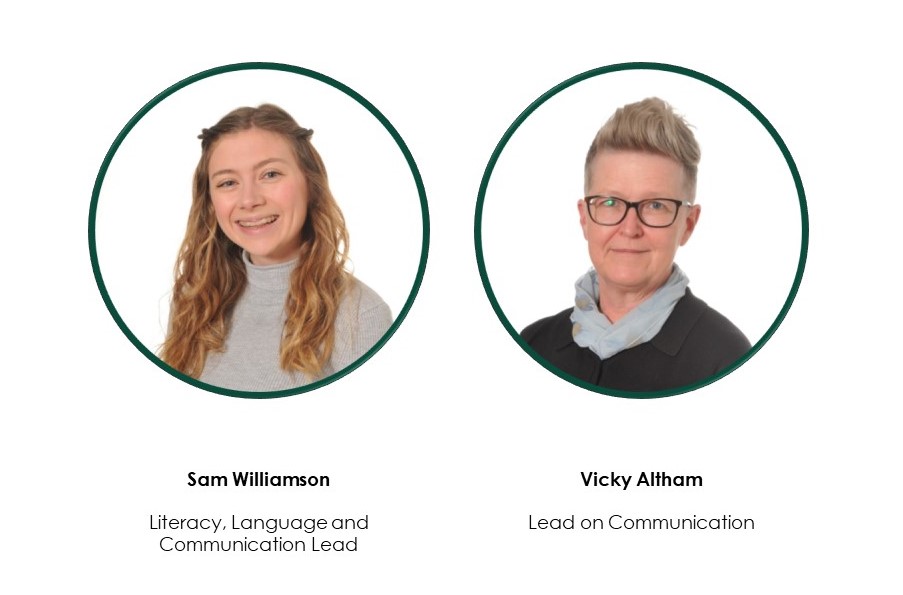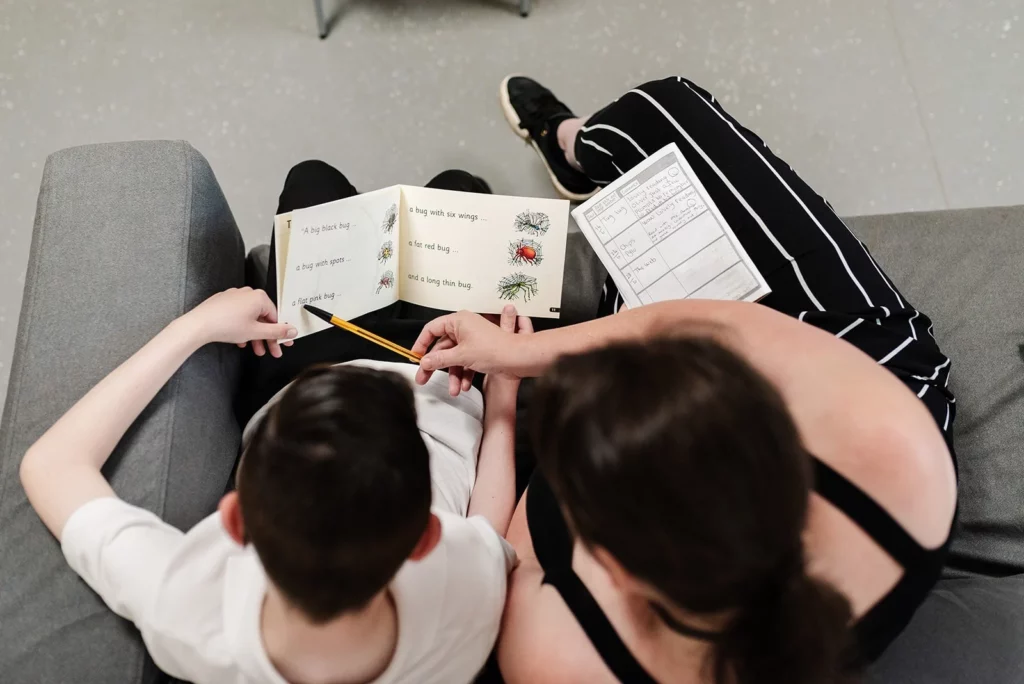Reading
How do we ensure that all pupils are able to access reading at Highbury?
Pupils at Highbury School access a bespoke and personalised reading curriculum, which aims to challenge and engage all learners.
Each pupil follows a reading pathway that gives them the opportunity to learn to read at a level appropriate for them. Pupils follow one or more of the following routes:
- Use of signs, symbols, and environment cues
- Phonological Awareness
- Phonics (Read, Write, Inc.)
- Sight reading (See and Learn)
- Functional reader
If pupils progress beyond a reading scheme, they are identified as functional readers and will continue to read a wide range of materials, focusing on comprehension and functionality. All classes share a story-time or sensory story, as well as doing daily phonics/phonological awareness. Every class has a timetabled ‘Reading Together’ session, with each class focusing on skills relevant for their pupils. These can include functional reading, awareness of books, taking care of books, drama skills and talk for reading.
What is phonics?
Phonics is the main vehicle used to teach children to read at Highbury School. Focused phonics is taught every day to pupils from entry into school if it is appropriate for them. If pupils struggle to access phonics or are seen to be making limited progress, they will instead use the See and Learn programme. Some pupils will use both schemes to enhance understanding and vocabulary.
Read, Write, Inc. is the name of the phonics scheme used at Highbury School. Please see document below that explains how the scheme works.

At Highbury we know our children make progress and retain knowledge better when they have a multitude of opportunities to embed their learning through an ‘over-learning’ approach. This is why we have adopted the graduated approach of the Read, Write, Inc. scheme and use our own, ‘Funky Phonics’ programme to compliment the explicit teaching of phonics. This ensures all of our pupils are engaged and show a full understanding of the new skills they are learning.
What is Phonological Awareness?
Some children are Highbury are at an early stage in developing their listening skills. Where children are identified to be showing difficulties with processing phonics e.g. struggling to blend sounds, unable to identify particular sounds. An adult can use the ‘Phonological Awareness’ pathway to identify gaps in their learning. This pathway is a tool to be used alongside the explicit teaching of phonics to support the development of these key skills.
Pupils who are not yet able to access Phonics, can also work on this pathway to develop early listening skills such as: sound discrimination, rhyme and rhythm, alliteration, syllables, on-set and rime and phoneme (sound) awareness.
What is See and Learn?
See and Learn is a reading and language programme used to teach vocabulary. Some children progress to learning sight words, simple phrases, and sentences. Unlike phonics, it does not break words down into separate sounds, and teaches them as whole words. Children learn vocabulary for relevant and motivating items, people and activities, moving on to those that are less familiar. Teaching of See and Learn is tailored to meet the needs of the pupils, for example, a child with visual impairment may be taught using concrete objects instead of pictures.

What does ‘reading’ look for pupils who follow a pre-formal curriculum?
Pupils following a pre-formal curriculum ‘read’ using signs, symbol and environmental cues. They use a range of cues as part of a total communication approach, including touch cues, Sign Supported English, key vocabulary, objects of reference and other sensory cues (such as switches, music and scents) to help them understand the world around them. These pupils experience a range of multi-sensory stories which consist of cues, simple sequencing, and repetition to engage pupils in the five areas of engagement: exploration, realisation, initiation, anticipation, and persistence. Communication is an essential element to these sessions, as pupils are encouraged to show preferences, and make choices.
Here is an example of a sensory story of the Gingerbread Man:

How do we foster a love of reading?
At Highbury school reading is embedding into all areas of the curriculum and is very much a part of everyday life. Learning environments across school are set up to encourage independence, with the use of labels, recognisable symbols, words, core vocabulary boards and sound buttons.
Pupils enjoy listening to, and experiencing, a wide range of stories, poems, rhymes, and non-fiction texts. Stories are chosen to suit the needs and interests of the children and to develop pupils’ comprehension, vocabulary, and love for reading. Pupils have access to reading materials that relate to current learning in other subjects. Reading materials are available that match ability and are chosen to engage pupils. Listening stations are used in classes for pupils to listen to audio stories, whilst exploring related artefacts.
Pupils are regularly read to, and experience shared and modelled reading where appropriate. Pupils partake in daily sessions of reading following the reading scheme that they use. Story times are engaging and planned to ensure pupils experience, engage and learn. Pupils are encouraged to share and read their favourite stories and show why they like them. Adults in school act as great role-modelling in expressing a love for reading.
We encourage parents to read with their child at home. Children take a book to share with their family which is matched to their ability and interest. In addition, pupils take home homework related to reading. This will be linked to what they are learning at school and includes phonics flashcards and comprehension work.
During the lockdown in the COVID19 pandemic, pupils attended virtual, 1:1 or small group, sessions on phonics and See and Learn. Teachers and teaching assistants also ran story and sensory story sessions for pupils at home. Reading materials were sent home where required.
Who leads literacy across the school?

Each class has an allocated teaching assistant to support the teacher in leading phonics in their class. These teaching assistants form a working group called the Phonics Champions and all share a passion for teaching children to read. They currently meet once a week to receive training and share good practice.

How do we monitor progress and ensure reflective practice?
Progression in reading is monitored throughout the year. During pupil progress meetings, leaders look at which scheme pupils follow and how much progress they are making. If any pupil is failing to make expected progress, additional support will be put in place and any training needs will be addressed.
As part of the monitoring cycle, we look at the teaching of reading through lesson observations, learning walks, book-looks, listening to readers and communicating with staff and pupils. Any areas for development are planned for and actioned accordingly.
Staff training is important to us. During the lockdown of the COVID19 pandemic in 2020, all staff attended a series of virtual training on phonics and phonological awareness. They also accessed training documents on See and Learn. Throughout the year staff meetings have a regular reading focus, more information can be provided on request.
Working with the Special Provision Cluster in 2021, a ‘deep dive’ (which consists of rigorous monitoring and investigation) was conducted in reading. It was found that the school have a rigorous approach and a high ambition in teaching of reading for all children. More information on this is in the presentation below.
If you would like more information about this aspect of the curriculum please contact us and ask to speak to one of our literacy leads.



